by Steve Markwith
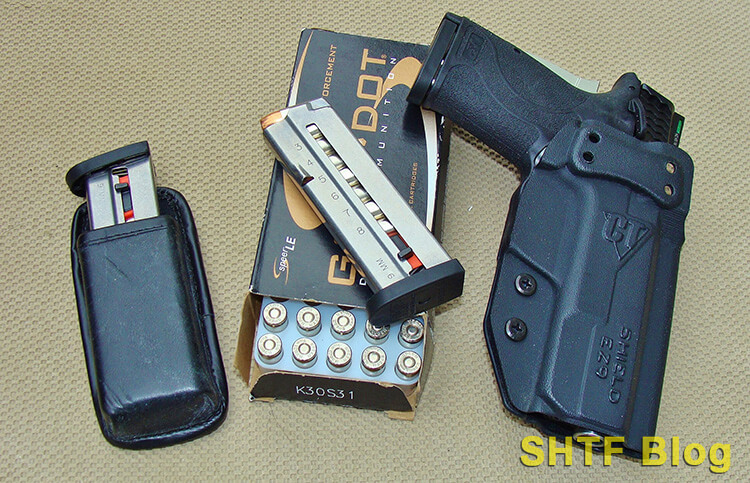
Several acquaintances within my area contacted me for advice about “good” defensive firearms. All are longtime residents whom I’ve known since the early 1980s. Back then, few of us locked our doors and a common storage spot for a set of vehicle keys was the ignition.
But time marches on and those days are gone. Meanwhile, most of us qualify for senior discounts and we’re feeling less secure. The silver lining – if there is one: Age leads to experience.
Here we are discussing handguns for seniors.
I ran a busy firearms training operation for more than 30 years. This was the perfect venue to witness gun handling among a diverse cross-section of adults and a wide assortment of firearms. This period was accompanied by plenty of change, too. Early on, many of our trainees were gung-ho prior-military males, eager to embrace anything that spit out vast quantities of lead, preferably with lots of noise.
But gradually, the demographics changed. Today, among a firing line of ten shooters, one or two might have military experience, five or more could be women, and a fair portion will have little-to-no firearms experience. This shift also coincided with a nationwide move from double-action revolvers to semiautomatic pistols. The experience provided a front row seat to see what firearms were “best” for a diverse group of shooters.
Those of us in the so-called Golden Years have similar recurring issues with handguns for seniors:
- gun size,
- recoil, and
- physical limitations.
This is quite similar to arthritic fingers, loss of flexibility, and vision challenges.
As for the above concerned neighbors, just about all owned a rifle and/or shotgun, but unanimously, the topic was a “good” handgun. Concerns centered on home defense (to include a possible home invasion), with some concealed carry in the mix.
So, handguns it is. But the firearm is only part of a much larger picture.
The Bigger Picture
The handgun itself shouldn’t be the starting point. Yes, it’s part of a defensive strategy, but the process should begin with a well-conceived plan. My long-time buddy and retired law enforcement expert, Sgt. Leonard, laid out the myriad home defense issues better than I could, and it’s well worth the read:
A Police Officer’s Advice on Home Invasions
There’s the all-important competency aspect, beginning with a solid grasp of safety, extending from there to operational skills, marksmanship, and tactics. This is seemingly overkill perhaps – at least for a home defense gun – but vitally important, nonetheless. Use of a firearm for defense guarantees involvement with our legal system so it’s worth having our ducks in a row regarding training.
The Gunsite Academy in Arizona has been a premiere sources for many years. If time and funds permit, their Seasoned Citizen course is designed for senior citizens and well worth attending. As an alternative, check with local gun shops and/or gun clubs for alternatives; much better than going it alone!
As for handguns, I’m gonna stick my neck out here. In all honesty, recommending a firearm is sorta like choosing the “right” vehicle for someone else, but what may save my skin is the age factor. High-capacity magazines are suddenly harder to fill, and my eagle-eyed vision has flown the coop.
Beyond these realities, where to start? Given the huge number of contenders on the market, you could drive yourself bonkers trying to pick the “perfect” gun.
So, I’ve shortened the list to a few double-action (D/A) revolver possibilities, and one semiautomatic pistol, capable of addressing seniors’ challenges. Key to these picks are readily available calibers that can get the job done without undue cost or excessive recoil.
The latter is also connected to gun size. Small handguns are appealing for carry purposes, but they’re harder to shoot accurately, and more difficult to control. A practical all-around handgun becomes a compromise, and that’s what you’ll see here.
Revolver Options
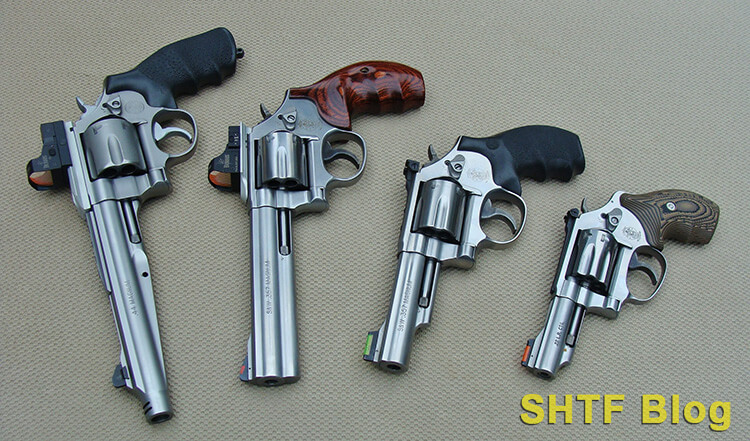
For our purposes, the reference is double-action (D/A) versions with swing-out cylinders, as opposed to classic western-style single-action (S/A) types. A D/A revolver is so-named because it can be fired two ways; either by cocking the hammer (S/A), to gain a very light trigger pull of around 3 pounds, or through a longer and heavier D/A trigger stroke. The latter is the safer alternative with stress factored in.
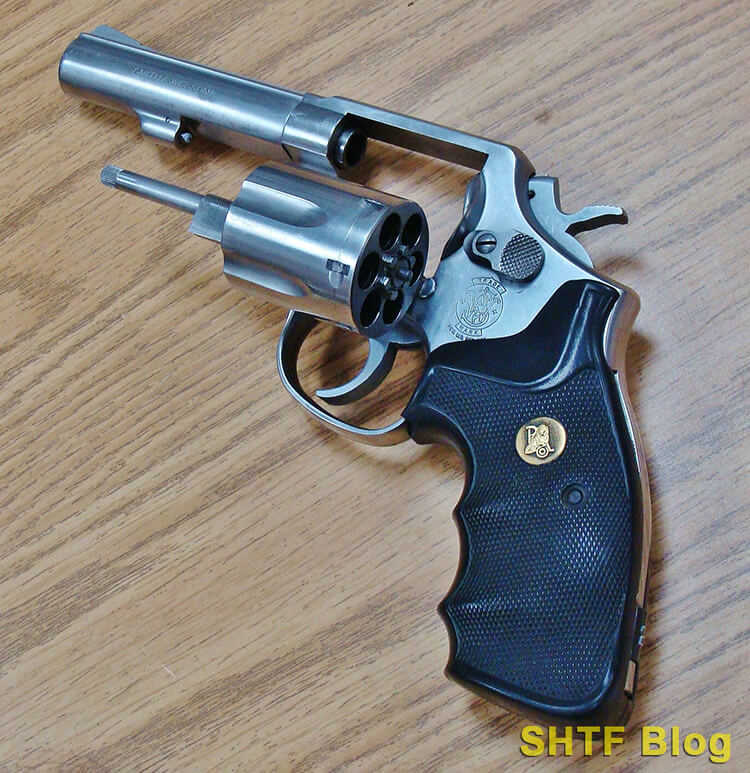
Revolver Advantages
Revolvers have received some recent knocks due to their limited capacities (compared to the latest 17 +1 pistols). While that’s true, I’d rather have 5-8 shots right now than a bunch more pending some still-undecided purchase.
A revolver is also a simple design – as in easy to understand. Press the cylinder-release and the assembly swings wide-open to expose all of its chambers for loading, unloading (through one simultaneous press of an ejector rod), and inspection.
Revolvers are practice-friendly, too. Unlike most semiautos, a D/A revolver can be dry-fired via the same trigger sequence employed during live-firing.
No worries about breakage either, at least not with a Smith and Wesson revolver. Toward the end of my agency’s revolver era, several dozen of our fixed-sighted stainless S&W Model 65 .357 Magnums had fired well above 50,000 rounds apiece (mostly .38 Specials), along with a bazillion dry-fires during week-long basic handgun programs.
We broke maybe two or three firing pins in ten years, all during live-fire stages. These old warriors were fully functional and could keep up newer versions, easily shooting 2-inch groups at 25 yards – a benefit of the revolver’s rigid barrel system.
Another plus: A revolver is a self-contained system. No expensive (or missing) magazines to fret over, or stiff high-capacity springs.
Result: A less expensive system. For a relatively minor investment (if needed), grips of various sizes can be installed to accommodate any hand.
Some even incorporate laser aiming systems, also valuable for trigger-control feedback during dry-fire practice (if the laser bounces when the hammer falls, the source is the shooter).
Revolver Disadvantages
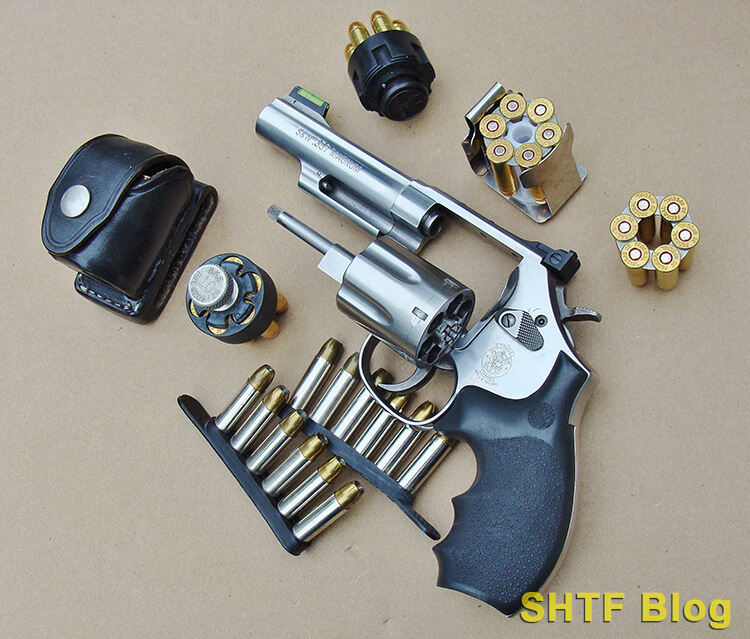
Beyond limited capacity, a revolver is typically slower to reload, although sub-4 second reloads are possible with lots of practice – or the use of moon-clips (see photos). Depending on the gun, some sights can be harder to resolve too – especially for older eyes (a good case for a set of laser grips). And lacking accessory rails, most revolvers won’t accommodate a light, although hand-held techniques provide viable alternatives (through training).
A D/A revolver also lacks an active safety. Instead, it relies on a long and heavy trigger pull, a design that takes practice to master, but one that’s worked well for decades. For some though, a heavy D/A trigger can be hard to master or even manage. And, if it takes two fingers, you’ll need a different gun – like the pistol we’ll examine shortly.
Calibers, Capacity, and Size
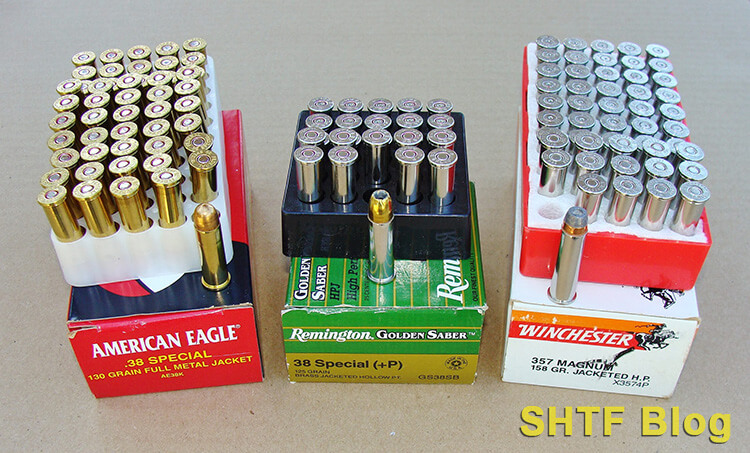
On a positive note, a revolver isn’t fussy about its diet. We fired three distinctly different loads through our agency’s M-65s to include .357 Magnums (rarely), .38 Special +Ps (for defense), and milder standard-pressure .38 Specials.
A .357 Magnum revolver is the ultimate in versatility because it can handle any of the above cartridges, but the latter two are more shooter friendly – especially in smaller revolvers.
To further reduce recoil while maintaining a defensive edge, Hornady’s Critical Defense Lite 90-grain .38 Special is worthy of consideration, along with various 110-grain loads.
Size wise, for many years, S&W revolvers (small to large) have been built on J, K, L, and N-frames. Factoring in concealment, a smallish 5-shot Model 60 J-frame model will carry and hide well.
The tradeoff? Most have shorter barrels, which are generally harder to shoot well, admittedly less of a concern within typical civilian defensive scenarios.
The better general-purpose alternative is a 6-shot K-frame, our 4” M-65s being one example. Capacity can increase to 7 or 8 shots (respectively) in the larger L and N-frames, but size-wise, they’re often a bit much for concealed-carry.
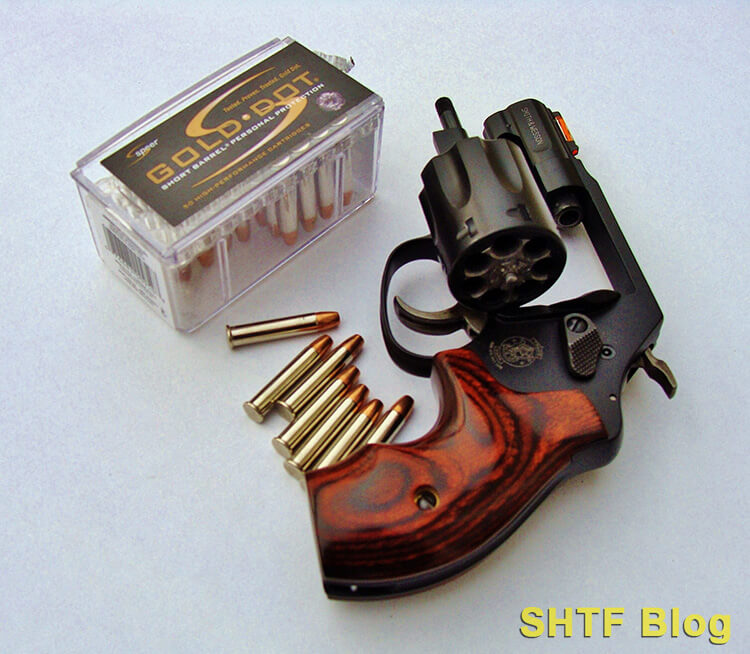
Returning to small-framed revolvers, Hornady also sells Lites for the .22 Magnum (.22 WMR), .32 H&R Magnum, and .327 Federal (the H&R version can be fired in the latter). At the possible expense of some punch, they reduce recoil while sometimes providing extra shots.
That said, the above .38 Special 110s are tolerable for many. If not, the smaller calibers are a whole lot better than no gun.
So far, it’s been all S&W, but Taurus sells very similar revolvers, to include a few cleverly engineered pistol-caliber revolvers. Their 9mm and softer-shooting .380 ACP offerings can be loaded simultaneously via moon-clips – the ultimate speed-loading system.
Then there’s Ruger. Beyond their more conventional line of revolvers, the LC-series is available in 9mm moon-clip versions. These hybrid polymer/metal guns also feature triggers designed for smoother cycling.
Ideal weight and size are best determined by personal requirements. Using the S&W line for reference, a dedicated home defense revolver could be a medium-frame 4” .38 or .357 K-frame, weighing around 36 ounces. I’m partial to the adjustable sights of my Model 66, but a used fixed-sight M-64 (.38 Spcl.) or M-65 will do.
Factoring in concealed carry, for most, a smaller J-frame sized revolver more convenient. One of my favorites was a five-shot 3” S&W stainless-steel Model 60 weighing 23 ounces. The similar M-60 LS Ladysmith is another good pick because of its lightened D/A trigger. You can go with a lighter gun through aluminum or Scandium alloys, but recoil will noticeably increase.
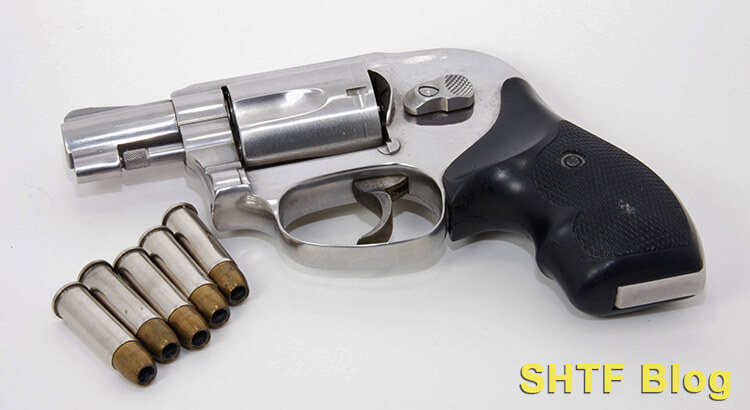
For what it’s worth, back in the day, like most others wearing badges, I carried a six-shot M-65 with two spare 6-round speed-loaders (125-grain .38 Special +P 125-grain JHPs); 18 rounds total, without feeling under-gunned – or over-burdened.
Semiauto Pistol Option
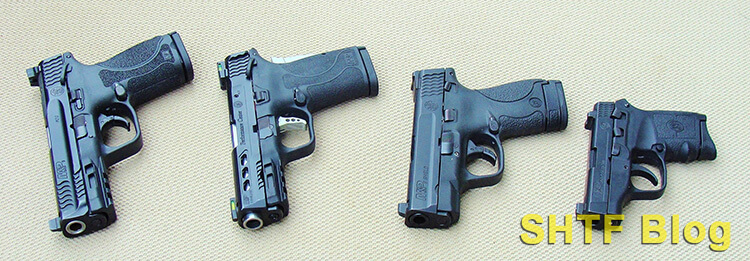
Time for the big leap! My all-around semiauto pistol pick for senior citizens (and many other folks) is S&W’s aptly named Shield EZ.
This gun first appeared as a light-recoiling .380 ACP, marketed as an easy-to-operate (EZ) handgun. I nearly bought one out of curiosity, but then got wind of a 9mm version. After the latter appeared, I sprung for a Performance Center version with a ported barrel (to reduce recoil), and superfluous slide ports that, if nothing else, contrast nicely with the pistol’s silver accents.
Mostly though, I bought this PC model for its Hi-Viz fiber-optic/tritium sights, highly visible in all lighting conditions to include darkness. The accessory rail is standard and permits easy attachment of a light.
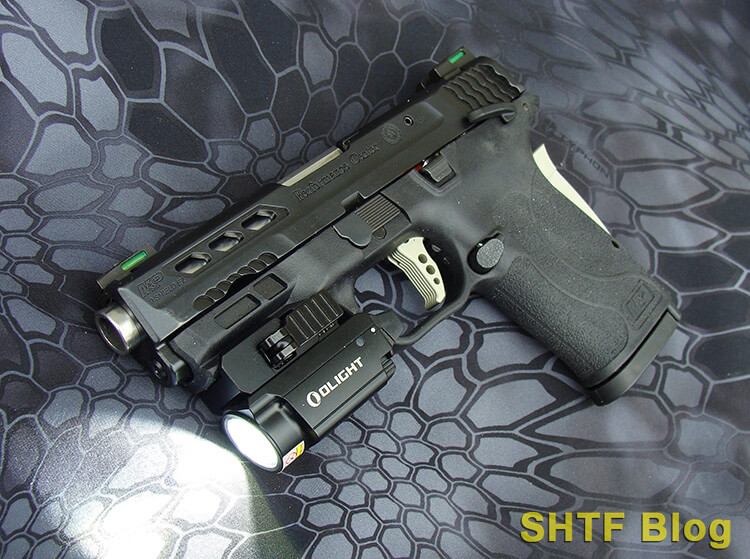
Pistol Advantages
As for operation, the EZ marque is legit. This pistol pretty much eliminates strength-related difficulties common to many semiautos. Starting with slide manipulation, the difference compared to my somewhat smaller 9mm S&W Shield is like night and day. The reasons are multifold, to include its low-mounted internal hammer (a departure from today’s popular striker-fired systems), designed to “ease” slide retraction.
Also, the slide has a set of grasping ears – another effort-reducing feature. The magazine is also well conceived. A set of small protruding tabs relieve pressure on the follower, eliminating the need for loading devices – or sore fingers and funny facial expressions. The tradeoff is reduced capacity. But the EZ is still an 8 +1 pistol – 9 available shots, backed up by rapid reloads.
S&W has safety covered, too. Beyond a standard internal drop safety, the EZ incorporates an odd-looking grip-safety similar to that of the well-respected U.S. Model 1911 .45 ACP Government Model. Interestingly, the first M-1911 iteration lacked an external safety lever. The Army wanted one, so John Browning obliged. You can buy an S&W EZ either way. Being no stranger to a 1911, I opted for an active safety.
Some claim this feature is an impediment to a defensive response, but I’ve noticed most detractors also own an AR-15 – equipped with a safety lever. If you go this route, unlike a “cocked & locked” 1911, the EZ’s slide can be retracted on-safe. The levers are generous and bilateral. The key to their effective use is training and ongoing practice.
Unlike some other pistols (to include S&W’s M&Ps), the EZ doesn’t feature interchangeable grips. Still, it strikes a nice balance of size and shootability – with a more than acceptable degree of accuracy. Part of this is attributable to the EZ’s pre-cocked internal hammer, which provides a respectable 4 ½-pound trigger and distinct reset.
Another contributing factor is the EZ’s sight-radius, long enough to support precise sight alignment. The attention-getting sights are also complimented by a properly fitted 3.8” barrel, which doesn’t sacrifice much velocity.
Pistol Disadvantages
Because a semiautomatic pistol is intrinsically more complicated than a revolver, safe loading, unloading, and clearance are dependent on a thorough understanding of its function – to include removal of the magazine before clearing the chamber!
Familiarity also extends to reliability, since function is dependent on proper maintenance (along with quality ammunition). Periodic disassembly is part of the cleaning process, but it’s sometimes skipped with only moderately “fiddly” designs.
The EZ Fix
Once function is clearly understood, most operational challenges (manual slide cycling, etc.) are largely eliminated through the EZ. Maintenance is nailed as well. Disassembly is about as easy as it gets, and mine even shipped with a useful cleaning kit. The directions are clear, too. Follow them and you’ll be good to go.
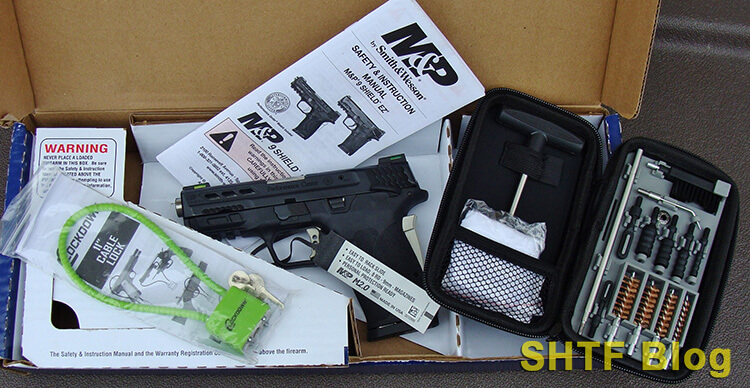
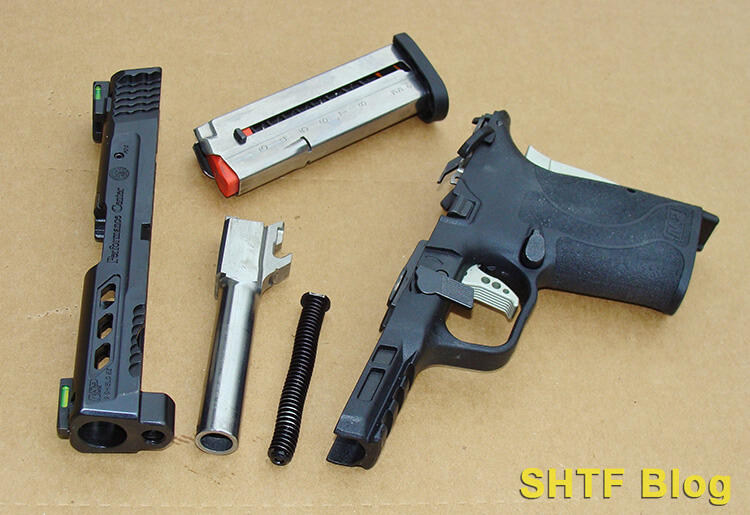
Calibers, Capacity, and Size
My pistol shot to the sights at 25 yards using 124-grain Speer Gold Dot JHPs, and Federal American Eagle 124-Gr. FMJs. Five-shot groups with either load averaged a respectable 2 ¼-inches off a sandbag rest. The EZ was also fast and intuitive from the holster, a basic Comp-Tac Kydex shell.
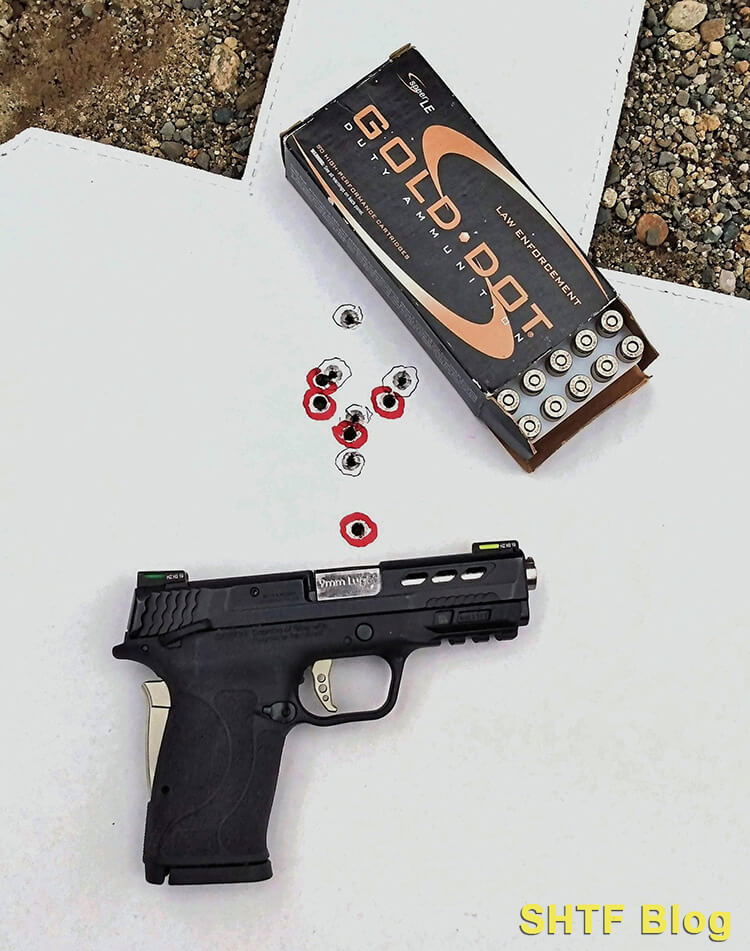
Despite the ported barrel, these loads did generate some recoil, a consequence of the EZ’s 23-ounce weight, still on par with many other compact pistols. If recoil is a concern, Hornady again offers a through their 100-grain 9mm Lites.
To lower the effects even more, S&W still sells .380 ACP EZ models. They’re slightly lighter versions (18-ounces) of the same pistol in a lighter-kicking caliber. Hornady has a good .380 load to match this choice, too. I can vouch for its ability to expand, having witnessed the results during FBI testing protocols.
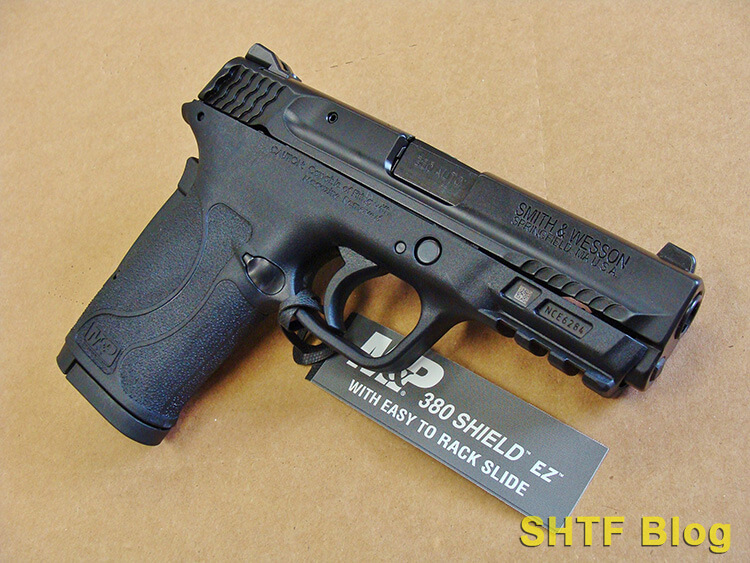
Regarding capacity, an 8 +1 pistol might not seem too reassuring compared to a 17 +1 version (to include my last duty-pistol), but the EZ’s magazines are much easier to load and, in a previous life, a 7 +1 Government Model .45 ACP saved my bacon during several unpleasant situations.
Yes, it was a “Forty-Five”, but the ammunition was non-expanding G.I. 230-grain hardball. Today’s 9mm defensive loads weigh only around half as much, but real-world data shows they’re more effective. The reason boils down to good expanding bullets!
Of course, we still need to be sure of our target, and that’s where the accessory rail comes in; the perfect spot for a light. At the moment, my EZ is equipped with a small but bright O-light Baldr Mini, which also has a built-in laser. So far so good but, if it quits, I still have the bright set of night-sights for insurance.
Parting Shots
Some folks aren’t into mechanical aspects of any type. If not, a revolver is the logical KISS alternative. Less bang, yes, but safer overall, with no disassembly required for maintenance. Those conversant in auto-pistols should be comfortable with an EZ.
Meanwhile, some experienced gun owners will be happier with other good pistols sold by Glock, Sig, Springfield Armory, etc. – products of a consumer driven market, much like vehicles. Whatever the choice, a remaining concern involves responsible storage, balanced against the need for rapid access. Fortunately, a number of good choices have recently appeared, including some featuring RFID systems.
Finally, for more information about handguns of all types, see my book on the subject: Handguns: A Buyer’s and Shooter’s Guide.
No comments:
Post a Comment